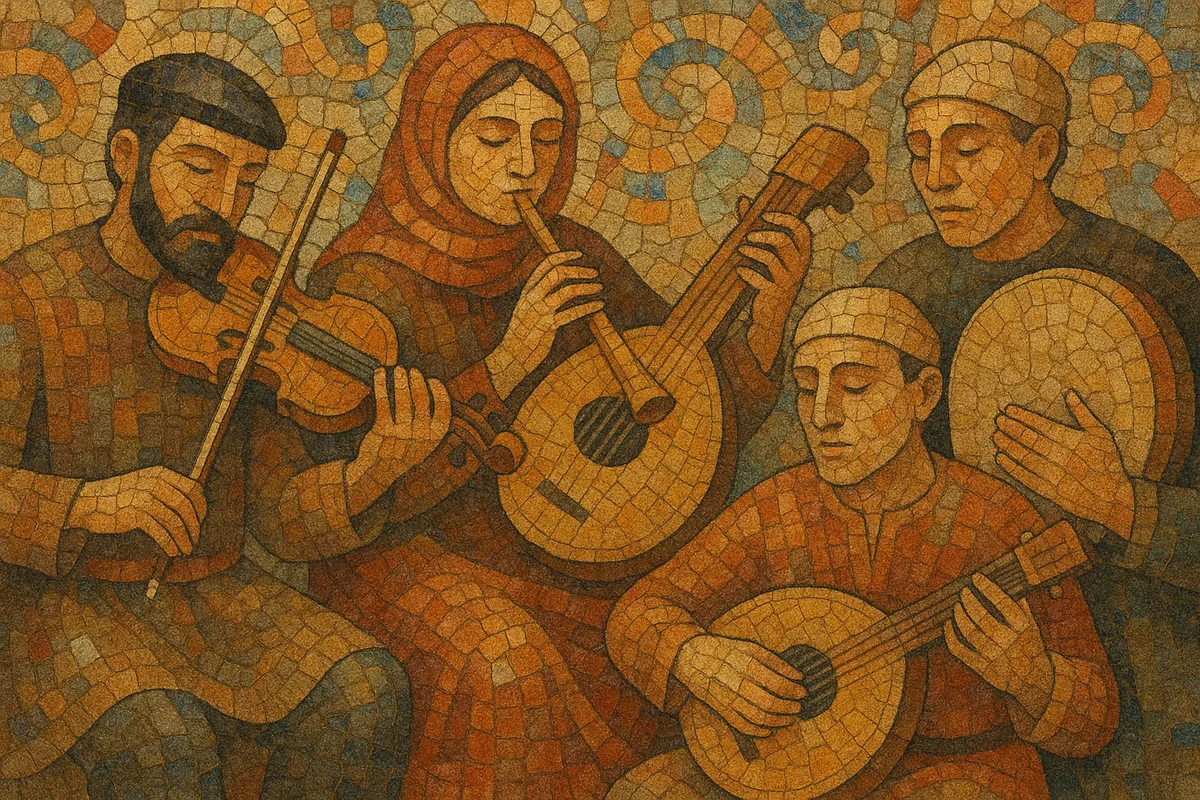
Traditional music is a broad umbrella for community-based, orally transmitted musical practices that predate or exist outside the commercial music industry and academic art-music institutions.
It encompasses work songs, dance tunes, narrative ballads, ritual and ceremonial music, and instrumental traditions tied to local instruments and social functions.
Typically learned by ear and performed in social settings, traditional music favors modal melodies, repetitive or strophic forms, call-and-response or heterophonic textures, and rhythms that track local dance steps.
Instrumentation is acoustic and region-specific (fiddles, flutes, pipes, drums, lutes, zithers, harps, accordions, etc.), with lyrics often preserving local languages, dialects, and histories.
In modern usage, “traditional music” also denotes historically rooted repertoire transmitted within families and communities, sometimes formalized through folk-revival ensembles, archives, and cultural institutions.
Traditional music arose organically alongside everyday life—work, rites of passage, worship, festivities, and storytelling—long before recording and mass media. Its transmission was oral/aural: musicians learned by listening, imitating, and participating, often using locally available instruments and retaining regional scales, modes, and rhythms.
During the 1800s and early 1900s, scholars and collectors in Europe and the Americas (e.g., Cecil Sharp, Francis James Child, Béla Vikár, and later Alan Lomax) documented village repertoires, ballads, and dance tunes. This archival impulse preserved endangered styles amid industrialization and urban migration, and it popularized the very idea of “traditional” music as a distinct category.
The folk revivals of the mid‑20th century encouraged community ensembles, festivals, and national ensembles to perform traditional repertoires on stage and radio. Ethnomusicology matured as a discipline, and field recordings circulated globally, bringing Tuvan throat singing, West African griot traditions, Celtic dance music, and other styles to broader audiences.
From the late 20th century onward, traditional music has coexisted with—and informed—genres like folk, country, and world fusion. Musicians balance authenticity with innovation, adapting repertoire for modern instruments and stages while community practitioners maintain participatory, local functions. Archives, workshops, and digital platforms now support intergenerational transmission and worldwide access.

